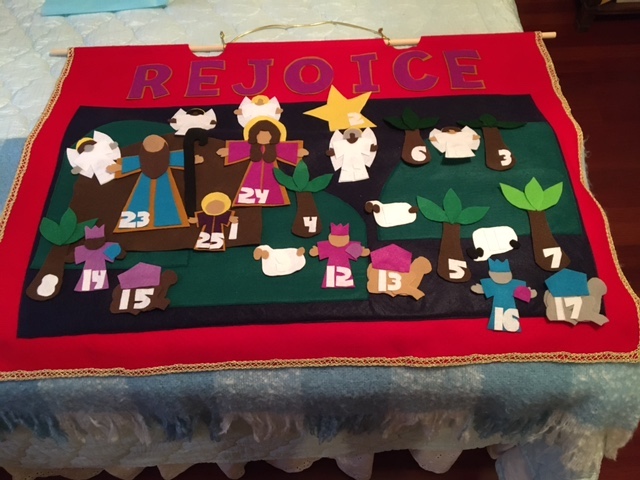That might be why I’m astonished when I hear people say about this Covid Christmas that they’ll celebrate next year. Next year is uncertain at the best of times, and, in the elongated days and months of the pandemic, when circumstances change from minute to minute, it has never been more important to live in the moment. We can’t afford to write off Christmas 2020, despite the sacrifices, and bank on gathering with family and friends next year. What has that looked like for me?
It didn’t mean flouting the public health protocols and getting together across provinces, eleven of us under one roof. Christmas was a quiet affair at our house, just my husband and me. No massive food preparation, no choir practices, no high chairs or toy boxes or eleven chairs around a dining room table in maximum extension. No conversations around social issues late into the night, no board games, no taking the grandkids tobogganing or pulling the sleigh to the park. This year, the in-law year for Christmas, any Christmas hubbub would occur now, in the laconic, surreal days between Christmas and New Year. But not this year.
Yet Christmas 2020 has presented a myriad of precious occasions to broaden the holiday experience. In a “normal” year, would our grandson and our niece have texted to discuss the optimal placement of a figure on the Advent calendar they both have, about which you might have read in an earlier post. That calendar also focused December for our grandchildren, and might even have liberated their parents to direct energy into adding to their own holiday traditions rather than in answering repetitive questions about when Christmas was coming.
In a “normal” year, our neighbour would have headed south, and we would have missed Happy Hours and meals with her, and celebrations of milestones in both our lives.
In a “normal” year, obsessed with a clean house and a packed freezer, would I have recorded The Velveteen Rabbit in eight short chapter videos for the grandkids? Would I have taken the time to post a few Christmas carols on the harp? My musicianship developed so much as a result of the recording experience.
In a “normal” year, we would have celebrated réveillon after the last Christmas Eve mass, as well as Christmas Day supper, with others. This year, we connected with any available children on Zoom on both occasions. Although we were in different locations and enjoying different delicacies, our conversation and the immediacy of togetherness transferred online.
In a “normal” year, we would have celebrated our daughter’s Christmas birthday a few days later, with singing in the birthday trifle at home. Instead, we were invited into their home through FaceTime to sing in the birthday trifle our daughter and her family had made and assembled together.
In the end, we did celebrate both the essence and the reality of Christmas. The phone calls, emails, texts, video connections and restricted church gatherings manifested the caring spirit of the holidays. So too the hand cut-outs of our grandson and his sister that hang on the doorframe, and the first-annual(?) Zoom family games night. We just can’t afford to sacrifice celebrations because they must diverge from habit and tradition. Even when things are “normal”, we can’t count on next year, on next month, not even on tomorrow. Life happens every minute, not at a particular moment that matches a preconceived idea or dream. As our son has reminded us in a shared article, we don’t know when we are doing something for the last time. Best, then, for the young waiter and for us, to maximize every single moment. Even when it doesn’t seem logical or possible or even desirable.















